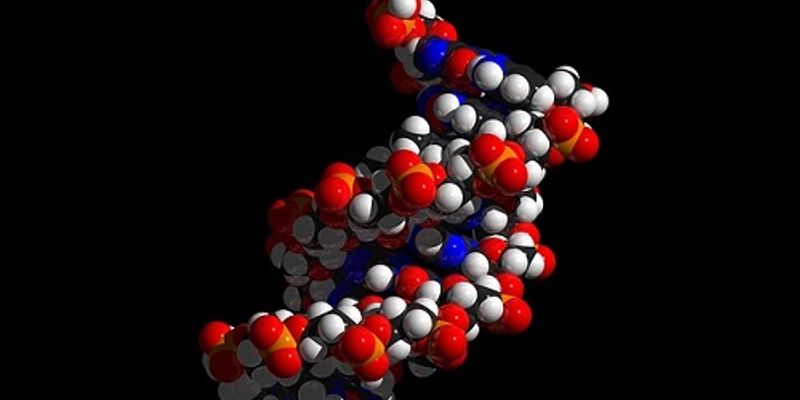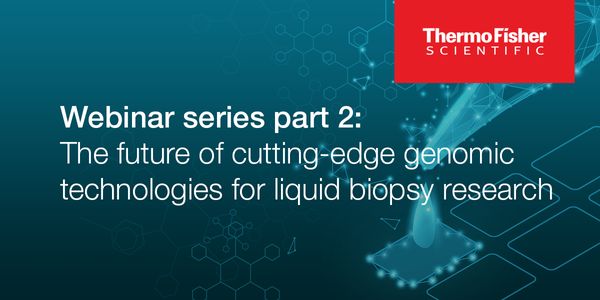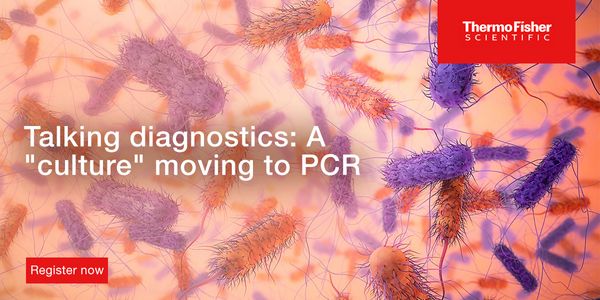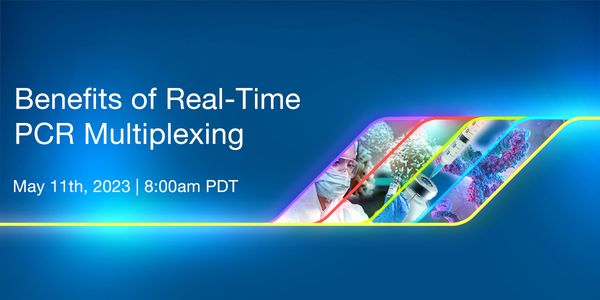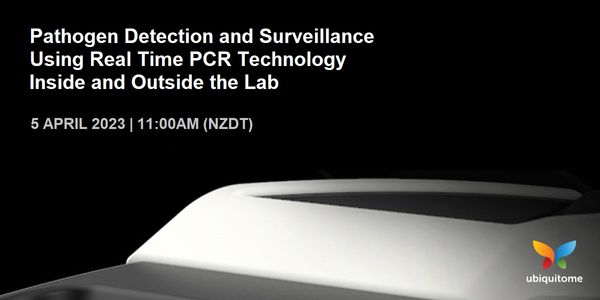PCR
PCR: Polymerase chain reaction, or PCR, is a laboratory technique used to make multiple copies of a segment of DNA. PCR is very precise and can be used to amplify, or copy, a specific DNA target from a mixture of DNA molecules.
-
SEP 13, 2023 | 10:00 AMLiquid biopsy is an emerging area of clinical research, particularly in the context of cancer. As a minimally invasive complementary or alternative approach to tissue biopsies, liquid biopsi...Speaker: Dr. Eloisa Jantus Lewintre, PhD , Dr. Gorka Alkorta-Aranburu , Matteo Allegretti, PhDPresented at: The Future of Cutting-Edge Genomic Technologies for Liquid Biopsy Cancer Research
Sponsored By: Thermo Fisher ScientificSeptember 13 at 10:00am CEST, 9:00am BSTWebinar airing too early or too late for you? This webinar will also be available: September 13 at 10:00am PDT, 1:00pm EDT https://www.labroots.com/ms/webinar/dpcr-liquidbiopsy-panel-2 and S...Speaker: Dr. Eloisa Jantus Lewintre, PhD , Dr. Gorka Alkorta-Aranburu , Matteo Allegretti, PhDPresented at: The Future of Cutting-Edge Genomic Technologies for Liquid Biopsy Cancer Research
Sponsored By: Thermo Fisher ScientificSeptember 13 at 9:30am IST, 12:00pm CST/SGTLiquid biopsy is an emerging area of clinical research, particularly in the context of cancer. As a minimally invasive complementary or alternative approach to tissue biopsies, liquid biopsi...Speaker: Dr. Eloisa Jantus Lewintre, PhD , Dr. Gorka Alkorta-Aranburu , Matteo Allegretti, PhDPresented at: The Future of Cutting-Edge Genomic Technologies for Liquid Biopsy Cancer Research
Sponsored By: Thermo Fisher ScientificShifting from or supplementing traditional cultures by offering PCR infectious disease testing can be challenging for a laboratory. The addition of this testing is not just a change for the l...Speaker: Scott E. Brady
Laboratories performing diagnostic testing for infectious diseases have an obligation to meet the needs of multiple patient populations....
Speaker:
Dr. Michael Perry
Currently established rapid methods for sterility testing of advanced therapy medicinal products (ATMPs) are mostly based on growth-based processes or the detection......
Speaker:
Dr. Alexandra Mueller-Scholz
, Yasmin Heynen
AUG 24, 2023 | 8:30 PM
When building your own infectious disease molecular panels there are many paths to consider. In this interview, we ask Marcus Cognetti and Dr. Ari Frenkel what approach is required to create...
AUG 08, 2023 | 8:00 AM
Antibiotic resistance is a global health threat and an emerging micropollutant of concern. Monitoring antibiotic resistance genes (ARGs) from environmental samples requires advanced molecula...
The use of adeno-associated viruses (AAV) as gene delivery vectors has vast potential for the treatment of many severe human diseases. A small group of intensively studied AAV capsids have b...
JUL 25, 2023 | 8:00 PM
NEED ABSTRACT Learning Objectives Understand how the challenges of amplification from low input DNA, including single cells, can be overcome Discover why more researchers are using a next ge...
JUL 11, 2023 | 12:00 AM
The human genome project was undertaken to determine the human DNA sequence and analyze variation among individuals. To make use of this information, tools were developed that could collect...
JUN 28, 2023 | 8:00 AM
Laboratories performing diagnostic testing for infectious diseases have an obligation to meet the needs of multiple patient populations. With infectious disease, time it takes for reporting...
JUN 22, 2023 | 11:00 AM
When building your own infectious disease molecular panels there are many paths to consider. In this interview, we ask Marcus Cognetti and Dr. Ari Frenkel what approach is required to create...
JUN 15, 2023 | 10:00 AM
Insights gained from studies using genome editing tools can provide a better understanding of cellular physiology, so that we can uncover answers to complex diseases and ultimately develop t...
JUN 14, 2023 | 8:00 AM
Insights gained from studies using genome editing tools can provide a better understanding of cellular physiology, so that we can uncover answers to complex diseases and ultimately develop t...
JUN 13, 2023 | 10:00 AM
Achieving consistent AAV quantification with the QuantStudio Absolute Q AutoRun dPCR Suite Accurate quantification of AAV vectors is crucial for quality control and timely decision-making du...
Speaker:
Kimberly Gomez
, Himani Patel
, Raquel Muñoz-Garcia, PhD
Sponsored By: Thermo Fisher Scientific
Real-time PCR, also known as quantitative PCR (qPCR), is the gold standard for sensitive, specific detection and quantification of nucleic acid targets. This qPCR technology as offered by Th...
Characterization of rare cells remains a major challenge for the evaluation and understanding of key biological systems, such as circulating tumor cells (CTCs) from liquid biopsy, stem cells...
Speaker:
Mina Zeinali, PhD
, Cissy Jiang, MS
Infectious gastroenteritis is a disease caused by bacterial, viral, and parasitic pathogens in which the small and/or large intestines become severely inflamed. Because infectious gastroenter...
Speaker:
Davidson H. Hamer, MD
For infectious disease pathogen detection and research, real-time PCR enables reliable, sensitive, specific, and scalable results over slower culture-based methods...
Speaker:
Celeste Stone
, Jorge Fonseca
